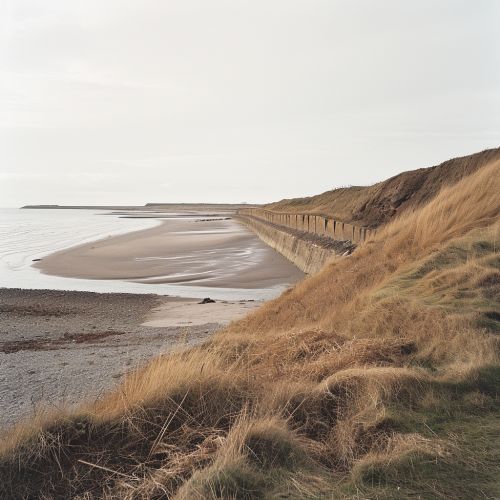Coastal Defenses
Introduction
Coastal defenses are structures or measures implemented to prevent the sea from encroaching on human settlements and infrastructure. These defenses can take many forms, from natural barriers such as sand dunes and mangrove forests, to man-made structures like sea walls, groins, and breakwaters. The study and implementation of coastal defenses is a critical aspect of coastal engineering.


Natural Coastal Defenses
Natural coastal defenses are features of the landscape that have evolved over millennia to withstand the erosive forces of the sea. These include sand dunes, mangrove forests, coral reefs, and salt marshes. These natural defenses not only protect the coast from erosion and flooding, but also provide important habitats for a wide variety of species.
Sand Dunes
Sand dunes are mounds of sand that are formed by the wind. They are a common feature of coastal areas and can provide a significant level of protection against coastal erosion and flooding. The roots of the vegetation that grows on sand dunes help to bind the sand together, making the dunes more resistant to the erosive forces of the sea.
Mangrove Forests
Mangrove forests are another important natural coastal defense. These forests grow in intertidal zones in tropical and subtropical regions. The complex root systems of mangrove trees help to stabilize the coastline and reduce erosion. In addition, mangrove forests can help to reduce the impact of storm surges and tsunamis.
Coral Reefs
Coral reefs are another form of natural coastal defense. These underwater ecosystems are formed by colonies of coral polyps that secrete a hard, limestone exoskeleton. Coral reefs can absorb wave energy and reduce the impact of storm surges.
Salt Marshes
Salt marshes are coastal wetlands that are flooded and drained by salt water brought in by the tides. They can absorb and dissipinate wave energy, reducing coastal erosion and flooding.
Man-Made Coastal Defenses
Man-made coastal defenses are structures or measures that are designed and built by humans to protect the coast from erosion and flooding. These include sea walls, groins, breakwaters, and beach nourishment.
Sea Walls
Sea walls are structures that are built along the coastline to prevent the sea from eroding the land behind them. They are typically made of concrete or stone and are designed to absorb wave energy.
Groins
Groins are structures that are built perpendicular to the coastline to prevent the movement of sediment along the beach. They are typically made of wood, concrete, or stone.
Breakwaters
Breakwaters are structures that are built offshore to reduce wave energy and prevent coastal erosion. They can be floating structures or fixed structures that are built on the seabed.
Beach Nourishment
Beach nourishment is a process in which sand is added to a beach to replace the sand that has been lost due to erosion. This can help to protect the coastline and maintain the recreational value of the beach.
Challenges and Controversies
While coastal defenses are critical for protecting human settlements and infrastructure from the sea, they are not without their challenges and controversies. These include the high cost of building and maintaining these defenses, the potential for environmental damage, and the ongoing threat of sea level rise due to climate change.
